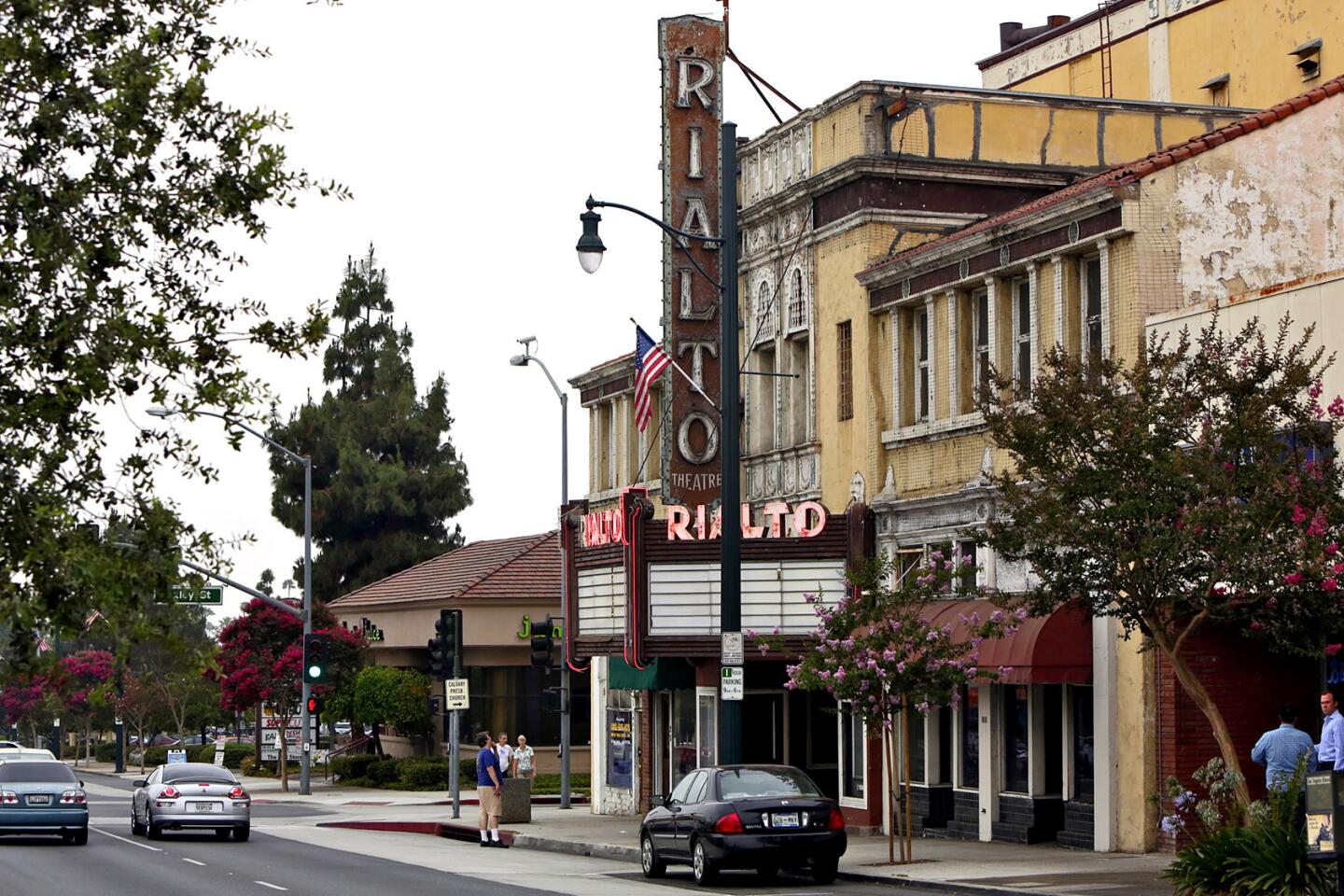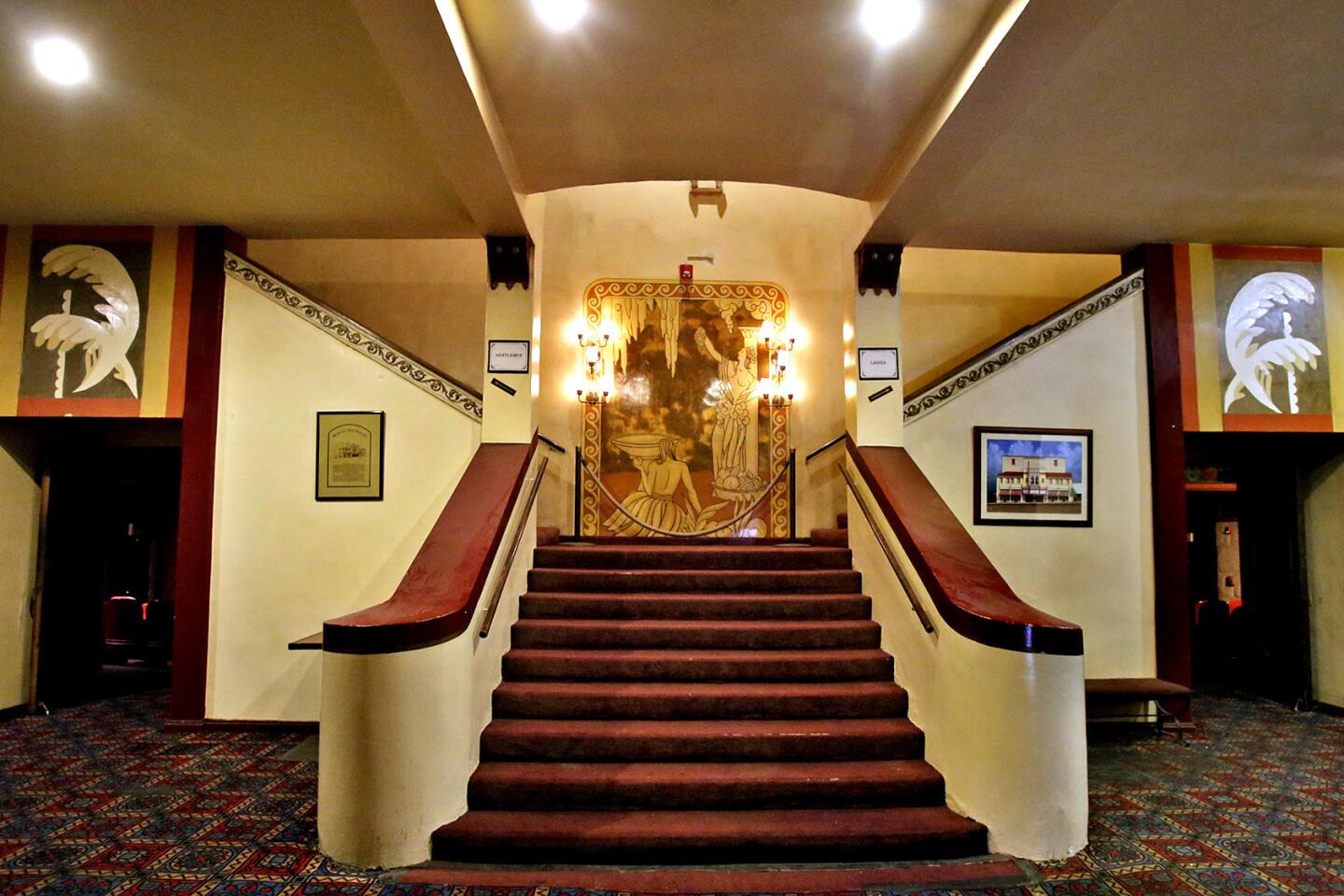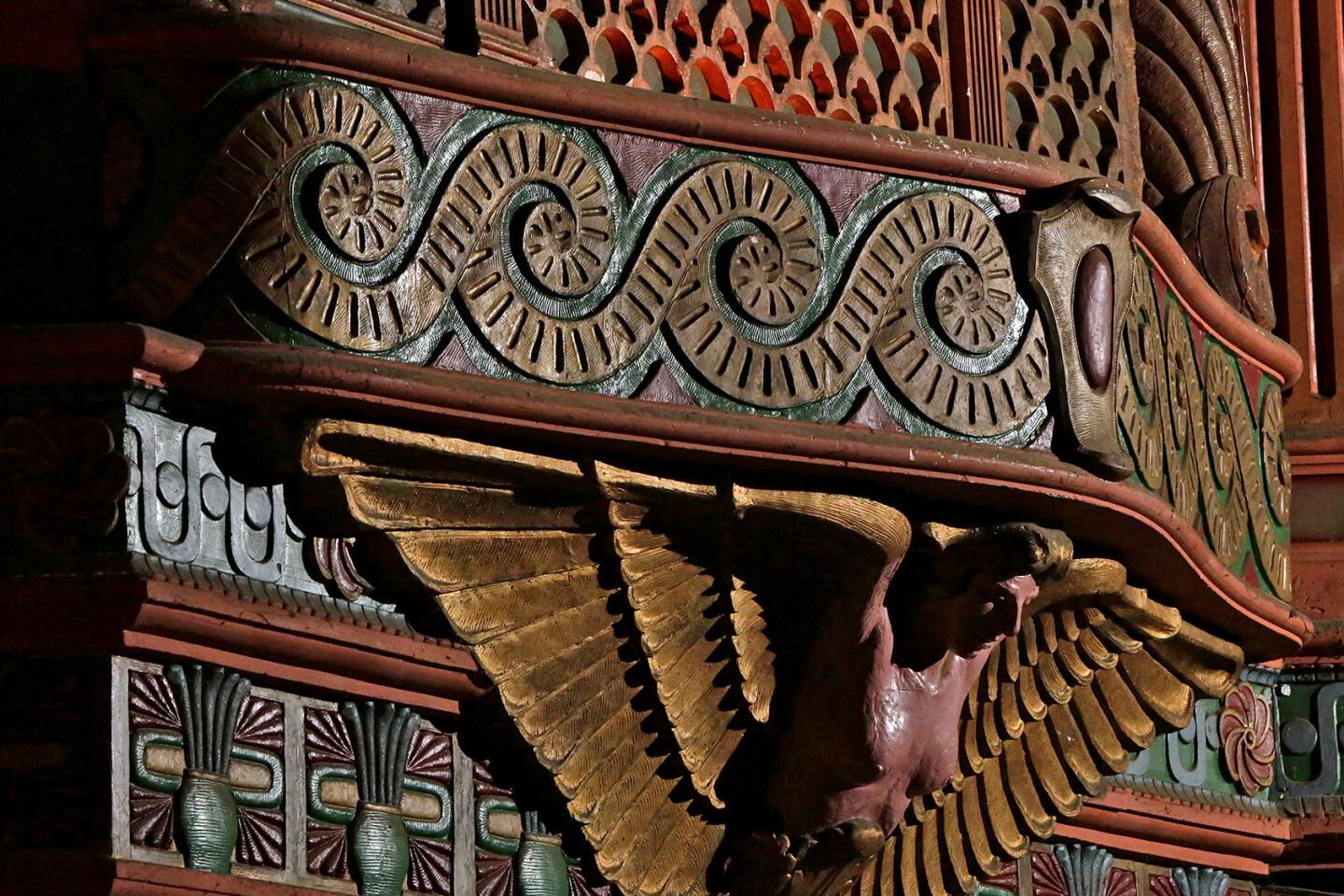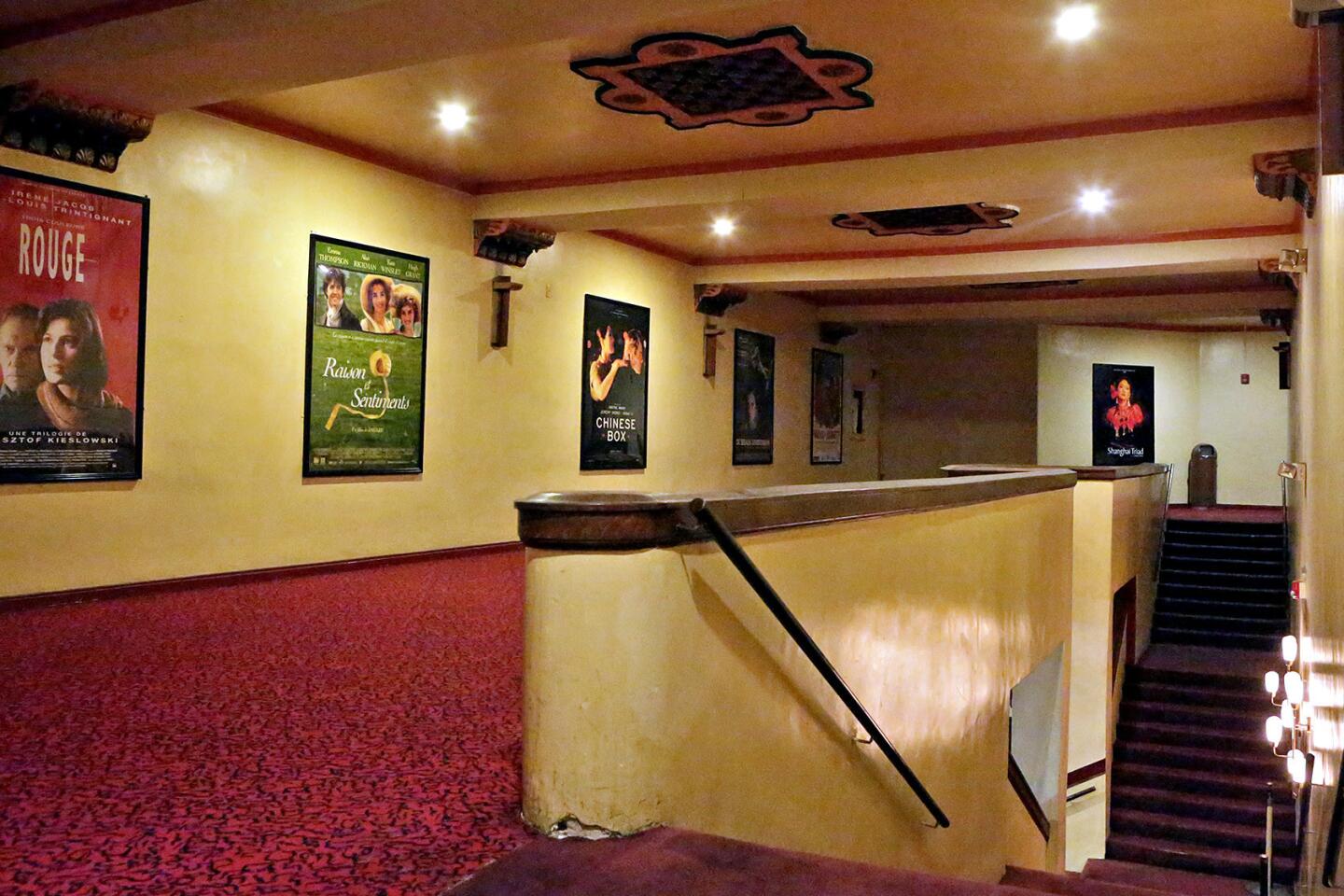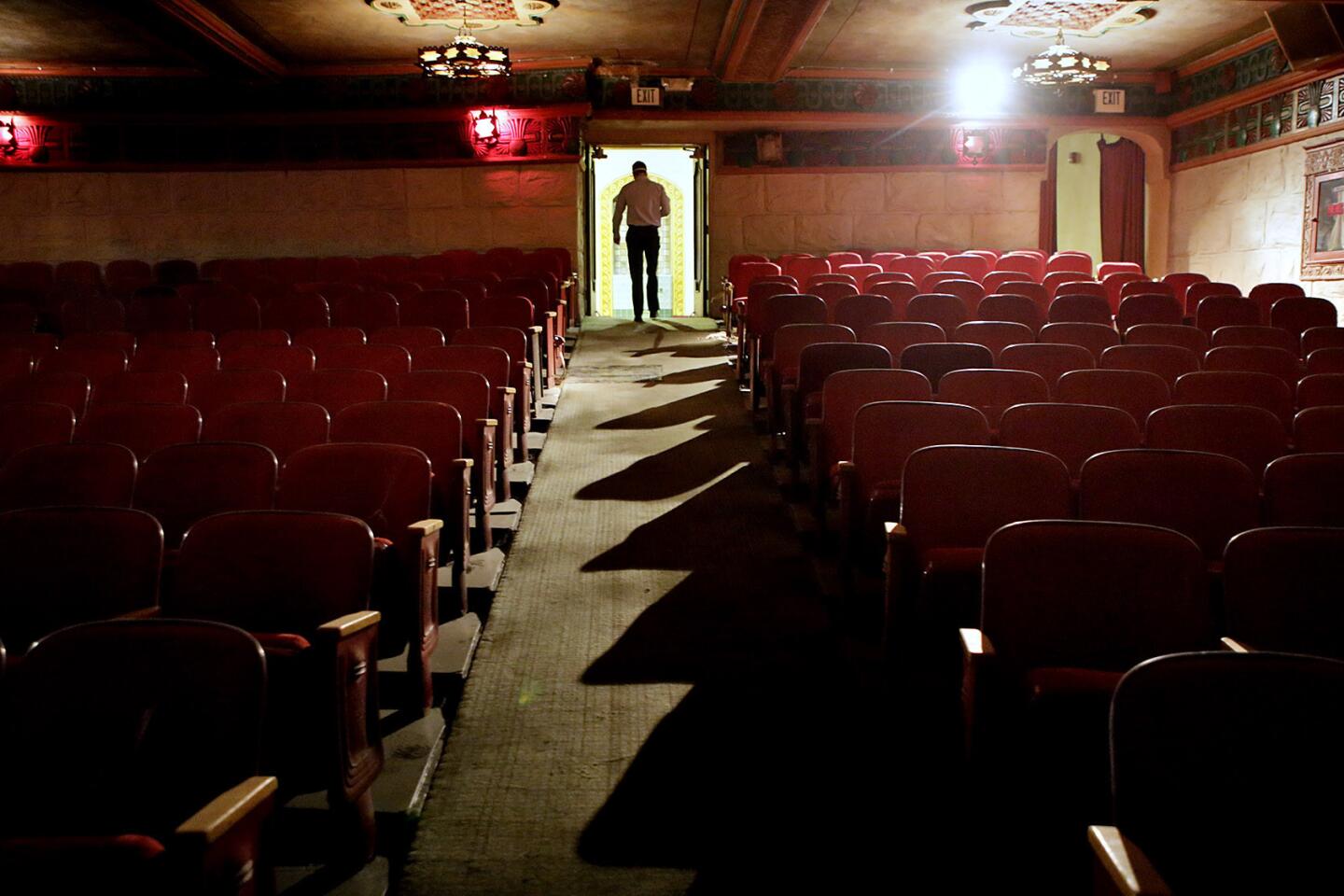Will South Pasadena’s Rialto theater rise again?
- Share via
In a city that takes pride in historic preservation, the closed Rialto Theatre in South Pasadena has been a particularly painful eyesore.
The 1,200-seat movie palace, listed on the National Register of Historic Places, has survived two fires and even weathered a 1977 push to turn it into a parking lot.
But these days the Rialto is crumbling, boarded up, with paint peeling, a fading postcard from an era of what’s now become impractical grandeur. Operator Landmark Theatres stopped showing films there in 2007 when it was no longer profitable, and the city closed the building to the public in 2010 after a chunk of it fell onto the sidewalk.
Locals have lobbied vigorously for the theater’s revival ever since, and in June, the Jebbia Family Trust began to accept bids for the property. Matthew Dobson, a representative of NGKF Capital Markets, the brokerage firm handling the transaction, said they’ve seen multiple offers already.
South Pasadena residents are anxiously monitoring the sale.
The Rialto is considered the distinguishing landmark of a city that takes pride in constancy. South Pasadena, a city of 25,000, lists more than 2,500 properties on a historic protection inventory. The city has mounted stiff opposition to efforts to extend the 710 Freeway because it would have harmed historic neighborhoods.
The trust has set no preconditions for bids, which means the property could become anything — an entertainment destination that drives much-needed foot traffic to the area, or a Walgreens.
Historic designation requires owners to keep historic properties in good condition and offers them some eligibility for grants and tax credits. But historical status doesn’t restrict what type of business operates on the property.
So meetings on the fate of the theater held by the South Pasadena Chamber of Commerce have been standing room only.
“They don’t make them like this anymore,” said South Pasadena firefighter Brad Harris, who has been accompanying prospective buyers on tours of the interior. “I hope they do something with it.”
The Rialto Theatre was always a “strange bird,” said Scott Feldmann, president of the local Chamber. The interior is an irreverent mash-up of Spanish baroque architecture and Egyptian kitsch. The theater also features an orchestra pit and balcony seating on both sides of a deep stage, amenities that have not seen steady use in decades.
“It’s an icon for our town,” Feldmann said. “Part Moorish, part baroque and part this character all its own.”
Built in 1925 by Lewis A. Smith, who also designed the Vista Theatre on Sunset Boulevard, it is one of the last classic movie palaces still standing in Southern California.
The Vista, built in 1923, was once in the same position as the Rialto, but a group of investors restored it at a cost of about $1 million and reopened it in 2000. Lance Alspaugh, the Vista’s owner, tore out about half of the seats to provide more legroom, added a cafe and eventually found an audience. He’s among those planning to submit a bid for the Rialto.
“We’ve been pursuing the Rialto for at least five years, even before it closed,” Alspaugh said.
His company Vintage Cinemas has restored two other classic movie palaces as first-run movie theaters. Alspaugh says the Rialto is more eye candy than eyesore. The interior is especially well preserved, with original artwork, murals and a drinking fountain made of Batchelder tile, a mark of California Arts and Crafts design. He is prepared to invest $4 million to restore the theater.
“There are so many different ingredients of the original Rialto inside,” Alspaugh said. “It really just needs restoration. The foundation is there.”
In the theater’s last days, members of the group Friends of the Rialto tended to its decor, said Escott Norton, a founding member. Volunteers restored murals, cleaned curtains, replaced light bulbs and even held some events there.
But the theater had become a place that many remembered fondly but few patronized faithfully. Its shows were rarely more than half full, and on some days no one came at all. About 200 people showed up for the last show, leaving about 800 empty seats during a screening of “The Simpsons Movie.”
But Norton says the theater just needs some love and appreciation to succeed. It was one of the first movie houses he went to as a kid, and just going inside is still a transformative experience, like walking into the 1920s, he said.
“I can promise you this,” Norton said. “When the doors are open and the lights are on and you have hundreds of people walking in and out of this theater, there won’t be a ‘vacant’ sign on this whole street.”
More to Read
Sign up for Essential California
The most important California stories and recommendations in your inbox every morning.
You may occasionally receive promotional content from the Los Angeles Times.


